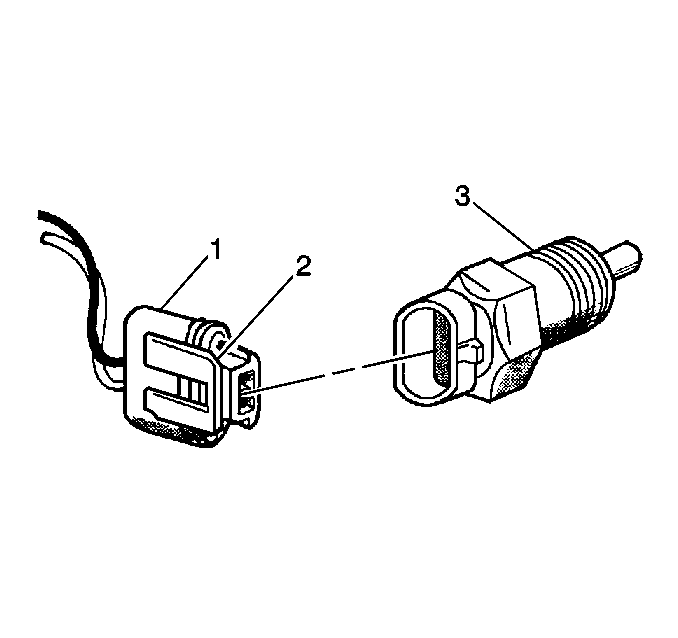The mass air flow
(MAF) sensor measures the amount of air which passes through the sensor. The
PCM uses this information to determine the operating condition
of the engine in order to control the fuel delivery. A large quantity
of air indicates acceleration. A small quantity of air indicates
deceleration or idle.
The scan tool reads the MAF value and displays it in grams per second
(g/s). The MAF sensor displays between 4 g/s-9 g/s at
idle on a fully warmed up engine. The MAF sensor values should
change rather quickly on acceleration, but the MAF sensor values
should remain fairly stable at any given RPM. The following DTCs
set when the PCM detects a malfunction in the MAF sensor circuit:
The intake air temperature (IAT) sensor is incorporated into the MAF
sensor component body. The IAT sensor is a thermistor which changes value
based on the temperature of air entering the engine. Low temperature
produces a high resistance, 100,000 ohms at -38°C (-39°F).
A high temperature causes low resistance 70 ohms at 130°C
(266°F). The PCM supplies a 5.0 volt signal to the
sensor through a resistor in the PCM and measures the voltage.
The voltage is high when the incoming air is cold, and low when the
air is hot. The PCM calculates the incoming air temperature by
measuring the IAT voltage. The IAT sensor signal is used to adjust
spark timing according to incoming air density.
The scan tool displays the temperature of the air entering the engine,
which should read close to ambient air temperature when the engine is cold.
The temperature should rise as the underhood temperature increases.
If the engine has not been run for several hours, overnight,
the IAT sensor temperature and engine coolant temperature should
read close to each other. The following DTCs set if the PCM detects
a malfunction in the IAT sensor circuit:
The manifold absolute pressure (MAP) sensor responds to
changes in the intake manifold pressure. The pressure changes as a result
of engine load and speed. The map sensor converts this to a voltage
output.
A closed throttle on engine coast down produces a relatively low map
output voltage. A wide open throttle (WOT) produces a high map output voltage.
This high output voltage is produced because the pressure inside
the manifold is the same as outside the manifold. The MAP is
inversely proportional to what is measured on a vacuum gauge.
The MAP sensor is used for the following:
DTC P0107 MAP Sensor Circuit Low Voltage or DTC P0108
MAP Sensor Circuit High Voltage sets when the PCM detects a malfunction in
the MAP sensor circuit.

